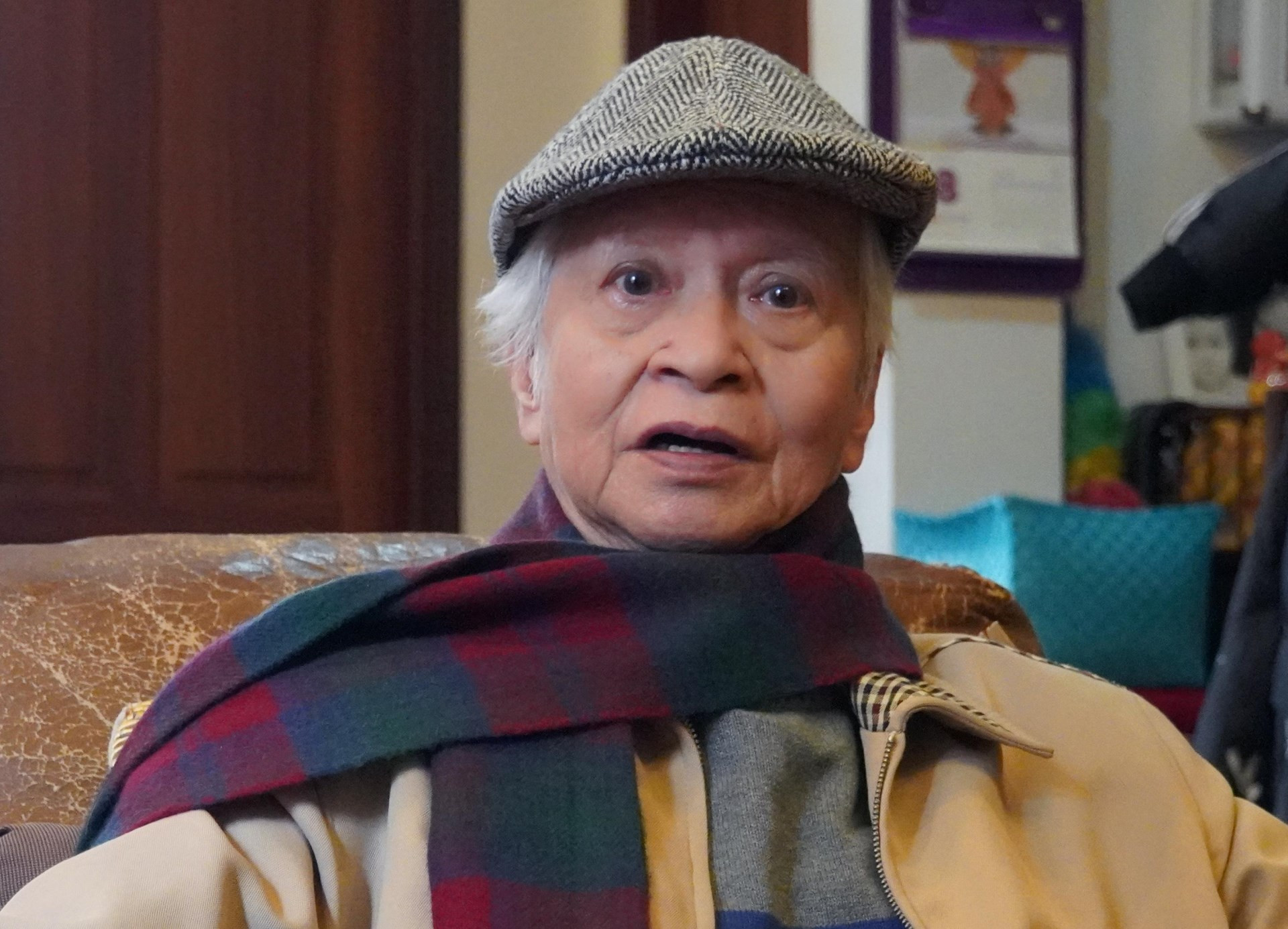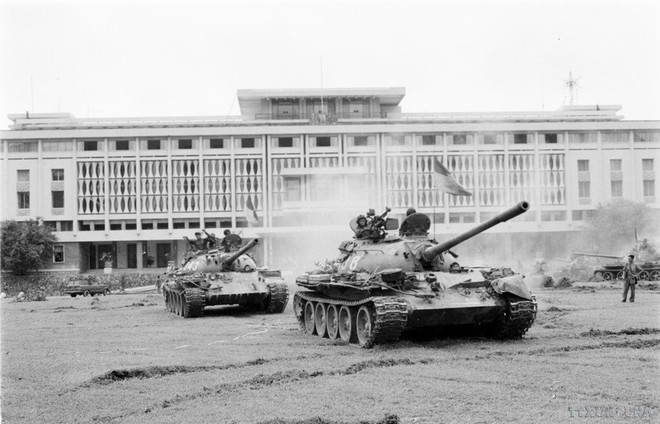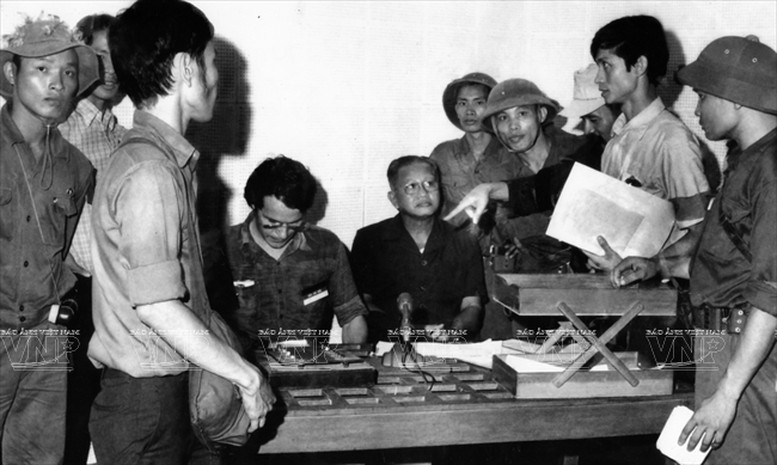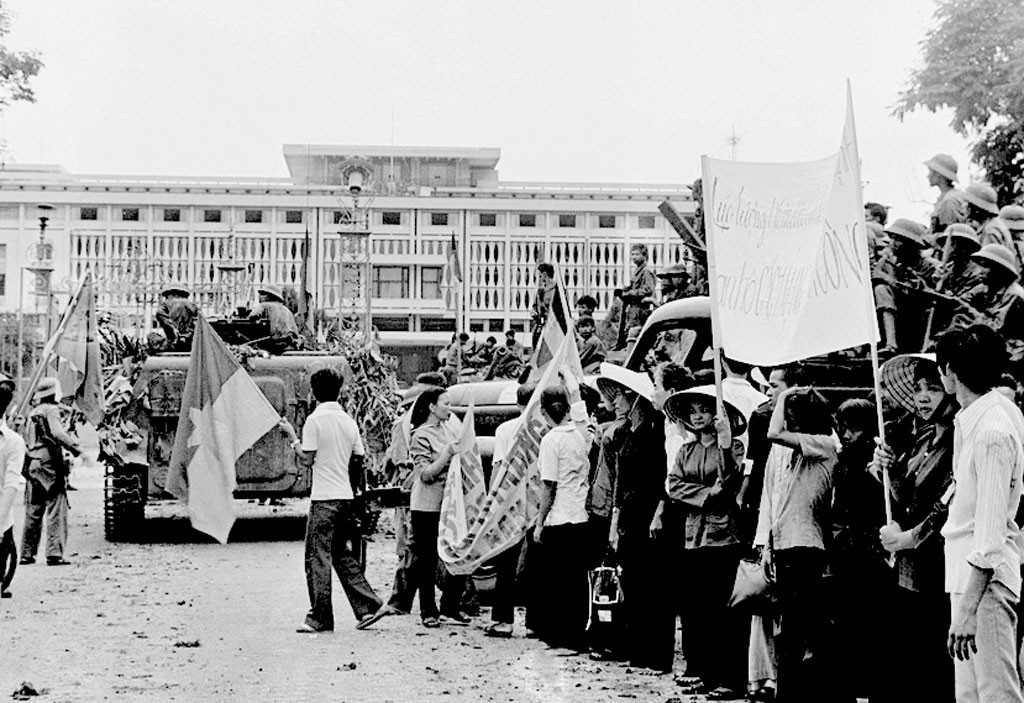Fifty years after the historic victory, Vietnam is entering a new era of prosperity and hope. To mark this milestone, VietNamNet presents a special series titled “April 30 - a new era,” featuring experts, military historians, and living witnesses sharing memories and lessons from the nation’s triumph in the resistance war against the United States.
Nguyen Huu Thai is one of those rare witnesses. He was there when Lieutenant Bui Quang Than raised the Liberation Flag over the roof of Independence Palace. He personally heard President Duong Van Minh declare an unconditional surrender. And he stood among the crowd as Trinh Cong Son sang “Joining Hands” without accompaniment on that historic day of reunification.

Born in 1940 in Da Nang, Nguyen Huu Thai studied architecture and law at the University of Saigon. From 1960 to 1975, he was actively involved in the youth, student, and pupil movement in southern Vietnam, serving as President of the Saigon Student Union during the 1963-1964 term.
Between 1964 and 1974, Thai was imprisoned three times by the Saigon regime for his activist efforts, which included mobilizing student protests against U.S. intervention in Vietnam.
After his third release, he continued public activism and became a prominent columnist for Dien Tin newspaper. He was part of a network of young intellectuals in the city identified as the “third force” - composed mainly of students and Buddhists - who openly advocated for peace and national reconciliation, undermining resistance from Saigon forces in the city.
Still, Thai could not have imagined that he would personally witness the most defining moments in the country’s history.
From 1990 to 1995, Nguyen Huu Thai lived and worked abroad before returning to Vietnam, where he continued writing and researching. In recent years, he has relocated to Hanoi.
Reflecting on April 30, Thai says two moments from that day still stir deep emotions within him: seeing the Liberation Flag fly over Independence Palace and hearing President Duong Van Minh’s unconditional surrender announcement.
That morning, upon hearing a broadcast from Saigon Radio where President Duong Van Minh and Brigadier General Nguyen Huu Hanh called for calm and an end to gunfire, the group of young intellectuals - known as the “third force” - split into two groups. One headed for the Saigon Radio station, the other, including Thai, moved toward Independence Palace.
By late morning, Thai heard the rumble of tanks approaching. From the palace foyer, he looked out over Thong Nhat Avenue (now Le Duan Street) and saw the tanks advancing in force.
Tank 390 rammed through the gates and entered the palace grounds. Others followed, flags of the National Liberation Front fluttering as they rolled across the lawn - a sight Thai says he “will never forget.”

“When the tanks stopped, a lieutenant jumped down, took the antenna of a tank, and attached the Liberation Flag to it as he ran toward the palace with other soldiers. At that moment, we didn’t know his name - he was Bui Quang Than, commander of Tank 843, Brigade 203, Corps 2,” Thai recalled.
Thai and Dr. Huynh Van Tong, wearing red-and-blue armbands of the uprising forces, requested that Lieutenant Than be taken up to the second floor. Another lieutenant, later identified as Vu Dang Toan, commander of Tank 390, followed to provide cover.
Once upstairs, Brigadier General Nguyen Huu Hanh led the soldiers to meet with President Duong Van Minh’s cabinet. Meanwhile, Lieutenant Toan was tasked with guarding the cabinet until higher command arrived, and Thai and Tong led Than to the palace rooftop to hoist the flag.
However, the central staircase was unusable due to bomb damage caused by pilot Nguyen Thanh Trung on April 8, 1975. They were led by Vu Quang Chiem - Chief of Staff of the Republic of Vietnam President’s Office - through a side staircase to an elevator.
Once on the rooftop, Chiem returned below. Than, Thai, and Tong descended a wooden staircase to reach the flagpole.
“The three-striped flag hanging there was huge, and we struggled to take it down. Without a knife, Than used his teeth to tear it off. At first, he wanted to discard it, but later folded it neatly.
Below us, people were watching and waiting. When the green and red flag of the National Liberation Front flew over Independence Palace, the crowd erupted in cheers and celebratory gunfire. I can’t even describe the overwhelming emotion I felt…”
The unprecedented broadcast

After witnessing the Liberation Flag raised at the heart of the former regime, Thai became a direct witness to another pivotal moment - President Duong Van Minh’s surrender speech.
According to Conclusion No. 974-KL/QUTW issued on March 14, 2022, by the Central Military Commission:
“At noon on April 30, 1975, Captain Pham Xuan The of Regiment 66 led the operation to escort Duong Van Minh to the Saigon Radio Station. There, he and his team drafted the surrender statement, later joined and completed by Colonel Bui Van Tung, political commissar of Brigade 203. Colonel Tung personally read the final surrender message on air.”
At the Saigon Radio studio that afternoon, Thai was one of the few to witness the moment President Duong Van Minh and his cabinet issued the unconditional surrender.
When they arrived, the revolutionary forces had taken control, but no one knew how to operate the broadcasting equipment. Students rushed to find technician Tran Van Bang.
The tape machine jammed, so German journalist Börries Gallasch lent his own recorder. When its batteries died, more students ran to find replacements.
As Minh recorded his speech, Gallasch sat beside him, with several others nearby. AP journalist Ky Nhan (Pham Ky), an intelligence agent under the A10 network, captured the historic scene.
At 2:20 PM Saigon time (1:20 PM Hanoi time), the first revolutionary broadcast of the historic day aired.
“I was asked to host the broadcast,” Thai recalled. “Speaking directly into the microphone, I introduced myself and Professor Huynh Van Tong as representatives of the Revolutionary People’s Committee of Saigon-Cholon-Gia Dinh. We had entered the palace before noon and helped raise the Liberation Flag. Normal life had returned to Saigon - now Ho Chi Minh City - the city that Uncle Ho dreamed of liberating.”
He introduced the recorded message: “I, General Duong Van Minh, President of the Saigon government, call upon the armed forces of the Republic of Vietnam to cease fire and surrender unconditionally to the Liberation Army of South Vietnam. I declare that all levels of the Saigon government must dissolve and transfer power entirely to the Provisional Revolutionary Government.”
Next, Prime Minister Vu Van Mau delivered a live address: “In the spirit of national reconciliation, I call on all citizens to joyfully welcome this day of peace and return to normal life. Civil servants should return to work under the guidance of the revolutionary government.”
Finally, Colonel Bui Van Tung announced: “We, representing the Liberation Army of South Vietnam, solemnly declare the complete liberation of Saigon and accept the unconditional surrender of General Duong Van Minh.”
Thai said that was the most emotional moment of his life - the moment he knew Vietnam had turned a new page in its history.

Historian Dr. Nguyen Nha later archived this special broadcast. Thai’s team continued organizing radio programs, mainly to inform the public about new revolutionary policies and invite voices from all walks of life to speak on air.
Beyond those landmark events, Thai remembers two individuals who left a deep impression on him that day.
The first was Colonel Bui Van Tung, whose decisiveness and clarity in action and speech left a lasting impact.
The second was musician Trinh Cong Son.
“Son and I were classmates and had known each other for years,” Thai recalled. “That afternoon, after the surrender broadcast, thousands of Saigon residents, students, and youth flooded the streets to welcome peace. Trinh Cong Son arrived at the radio station full of joy and excitement. He invited everyone to sing ‘Joining Hands’ together, without instruments.
“To this day, I still find it remarkable. The lyrics he wrote in 1968 were so perfect for that moment - the moment of reunification and national harmony:
‘We walk with open arms to unite the mountains and rivers…
The vast land welcomes us home
Together in celebration like a whirlwind across the sky
Our hands joined in a circle of Vietnam…’”
Ngan Anh